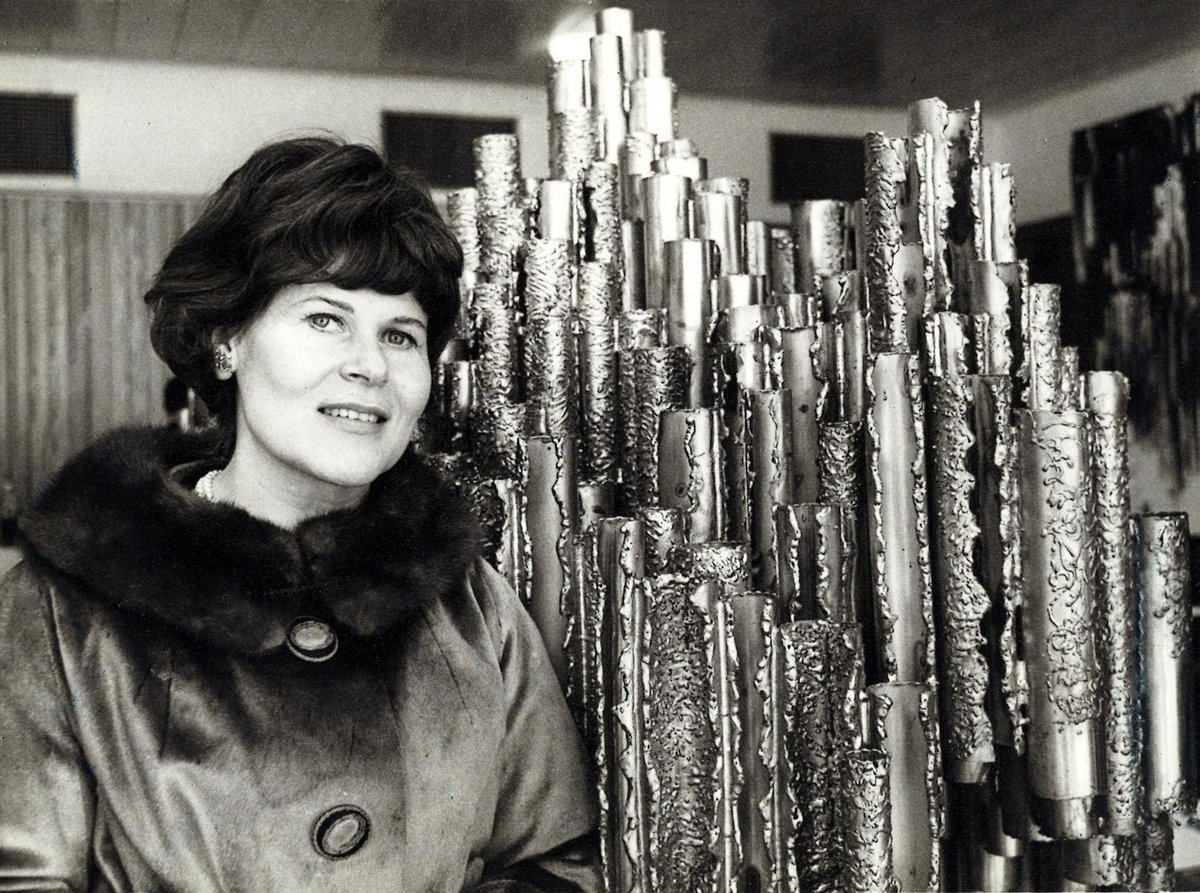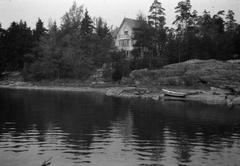
Sibelius Monument Visiting Hours, Tickets, and Helsinki Historical Sites Guide
Date: 14/06/2025
Introduction
Set within the peaceful confines of Sibelius Park (Sibeliuksen puisto) in Helsinki’s Töölö district, the Sibelius Monument serves as a striking homage to Finland’s iconic composer, Jean Sibelius (1865–1957). Designed by Eila Hiltunen and unveiled in 1967, the monument’s innovative form—composed of over 600 welded stainless steel pipes—evokes both Sibelius’s music and the natural Finnish landscape that inspired him. As a freely accessible outdoor landmark, the monument welcomes visitors year-round, offering a unique intersection of art, music, and nature that resonates with Finnish cultural identity. This comprehensive guide covers everything you need to know for your visit, from practical details like hours and transport to the monument’s artistic symbolism, nearby attractions, and top travel tips (GoFinland; HAM Helsinki; notaboutthemiles.com).
Table of Contents
- Introduction
- Historical Background
- Symbolism and Artistic Vision
- National Identity and Cultural Heritage
- Public Reception and Artistic Debate
- Materiality and Construction Techniques
- Integration with the Landscape
- Visiting Hours and Tickets
- How to Get There
- Guided Tours and Special Events
- Nearby Attractions
- Photography Tips
- Frequently Asked Questions (FAQ)
- Visual and Interactive Media Suggestions
- Conclusion
- Call to Action
Historical Background
Following Jean Sibelius’s death in 1957, the Sibelius Society launched a competition to commemorate his legacy. Eila Hiltunen’s winning design, “Passio Musicae,” comprised hundreds of welded steel pipes, abstractly capturing the dynamism of Sibelius’s music. Public debate over the monument’s abstraction led to the addition of a realistic bust of Sibelius at its base, balancing modernism with tradition (GoFinland; HAM Helsinki; Like a Local Guide).
Symbolism and Artistic Vision
Eila Hiltunen’s design represents both the auditory impact of Sibelius’s symphonies and the Finnish landscape. The cluster of 600+ steel pipes, reminiscent of organ pipes, creates a wave-like structure that reflects Finland’s forests and lakes. Although Sibelius rarely wrote for the organ, the pipes symbolize the grandeur and resonance of his music (HAM Helsinki; trip.com). The bust of Sibelius beside the abstract structure provides a tangible connection to the composer.
National Identity and Cultural Heritage
The Sibelius Monument is more than a memorial; it is a powerful symbol of Finnish identity and resilience. Sibelius’s music, especially “Finlandia,” became anthems of national pride during Finland’s struggle for independence. The monument, surrounded by birch and pine in Sibelius Park, reinforces this legacy and serves as a venue for national celebrations and cultural events (Nordic Visitor).
Public Reception and Artistic Debate
Initially, the monument’s abstract form sparked intense debate. While many admired its modernity, others felt it lacked a direct tribute to Sibelius. The addition of the composer’s bust appeased critics, and today the monument is widely embraced as a unique blend of avant-garde and tradition (Travel Wonders Blog).
Materiality and Construction Techniques
The monument’s pipes are crafted from acid-resistant stainless steel, ensuring durability against Helsinki’s climate. Each pipe was individually welded and positioned, creating subtle variations and visual complexity. The open-ended pipes allow the wind to produce soft, haunting sounds, adding a sensory dimension to the visitor experience (trip.com). The structure measures approximately 8.5 meters high, 10.5 meters wide, and weighs about 24 tons.
Integration with the Landscape
Hiltunen’s monument is thoughtfully integrated into Sibelius Park’s natural surroundings. The open structure frames views of the sky and trees, inviting visitors to move around and beneath the pipes. The placement away from Helsinki’s historic center encourages a dedicated visit, especially rewarding in spring and summer when the park is in bloom (notaboutthemiles.com).
Visiting Hours and Tickets
- Hours: The Sibelius Monument is located in a public park and is accessible 24/7, year-round.
- Tickets: No admission fee; visiting the monument and park is always free (TourTravelWorld; The Gate with Brian Cohen).
How to Get There
- Address: Sibelius Park, Töölö District, Helsinki.
- By Public Transport: Served by tram lines 2, 4, 8, 10 and bus routes 14, 18, 24, 39 (Guias Viajar).
- Walking/Biking: It’s about a 30–40 minute scenic walk from the city center; bike paths are available.
- Parking: Limited street parking; public transport is recommended.
Guided Tours and Special Events
Numerous Helsinki tour operators include the Sibelius Monument in their city tours, often combined with sites like Finlandia Hall and the Rock Church. The monument occasionally hosts musical performances, especially during summer and on Sibelius-related anniversaries. Check local event listings for details (Destination.com).
Nearby Attractions
- Finlandia Hall: Alvar Aalto’s architectural masterpiece nearby.
- Temppeliaukio (Rock) Church: Renowned for its rock-hewn design.
- National Museum of Finland: Offers further insights into Finnish history.
- Hietaniemi Cemetery: Burial site of many notable Finns.
- Café Regatta: A charming seaside café near the park (Guias Viajar).
Photography Tips
- Visit during early morning or late afternoon for optimal lighting and dramatic shadows.
- Capture the interplay of light and reflections on the steel pipes.
- The monument’s abstract forms offer opportunities for creative, unique compositions.
- Use alt text like “Sibelius Monument Helsinki stainless steel pipes sculpture” for online images to enhance SEO.
Frequently Asked Questions (FAQ)
Q: When can I visit the Sibelius Monument?
A: The monument is open 24/7, year-round.
Q: Is there an entrance fee?
A: No, visiting is free.
Q: How do I reach the monument?
A: By tram (2, 4, 8, 10), bus (14, 18, 24, 39), on foot, or by bike.
Q: Is the monument wheelchair accessible?
A: Yes, the park features accessible paths.
Q: Are guided tours available?
A: Yes, many city tours include the monument.
Q: Can I attend concerts there?
A: Occasionally, especially during Sibelius-related events.
Visual and Interactive Media Suggestions
- Include high-resolution images of the monument during different seasons.
- Add interactive maps showing public transport routes and nearby attractions.
- Recommend virtual tours or 360-degree panoramas for an immersive preview (Interactive Map of Sibelius Monument).
Conclusion
The Sibelius Monument stands as a testament to Finland’s national pride, artistic innovation, and the enduring legacy of Jean Sibelius. With its fusion of abstraction and realism, and seamless integration into Helsinki’s natural landscape, it offers a compelling destination for music lovers, art enthusiasts, and all travelers. Its free, year-round accessibility and proximity to other cultural landmarks make it a must-visit on any Helsinki itinerary.
Call to Action
For the latest visitor updates, guided tour options, and more travel inspiration, download the Audiala app. Explore related articles on Helsinki’s cultural landmarks and follow us on social media for up-to-date tips and inspiration for your Finnish adventure!
Summary
The Sibelius Monument encapsulates the creative spirit of Finland, blending modernist abstraction with deep cultural roots. Its evocative design, year-round accessibility, and location within Sibelius Park provide a multisensory experience that honors both music and nature. Whether you seek reflection, inspiration, or a memorable photo opportunity, the monument invites you to experience the essence of Finnish heritage.
References and Further Reading
- GoFinland
- HAM Helsinki
- notaboutthemiles.com
- TostPost
- trip.com
- Like a Local Guide
- Nordic Visitor
- Travel Wonders Blog
- TourTravelWorld
- The Gate with Brian Cohen
- Guias Viajar
- Discovering Finland
- Destination.com
- MakeMyTrip
- Wikipedia




























































































































































































































